Cloud Computing : TimeLine
Although the Cloud computing came in limelight in 2007, but the term itself was born in year of 2006 when Amazon introduced Elastic Compute Cloud (EC2). Its popularity has increased swiftly since then due to its ability to offer flexible and dynamic IT infrastructures, Quality of Service (QoS), computing environments and configurable software services.
Earlier computing technologies were mainframe computing which provided the large computational facilities. Mainframes were powerful, highly reliable specialized for large data movements and massive I/O operations. They were mostly used by large organizations for bulk data processing. Mainframes worked on batch processing. After mainframes and supercomputers, cluster computing emerged in 1980. Its advanced technology reduced the cost and size of supercomputers and became the standard technology for parallel and high performance computing. Owing to advancements in technology, grid computing evolved in early 1990s. Grid computing now had the capability to access the large computational power and various kinds of services. Grids were developed initially by combining clusters which were geographically dispersed. These clusters belonged to different organizations and were made to share computational power. Clusters were restricted to common resources leading to development of grids. Cloud Computing is often considered as the successor of grid computing. The origin of cloud computing is shown in figure:
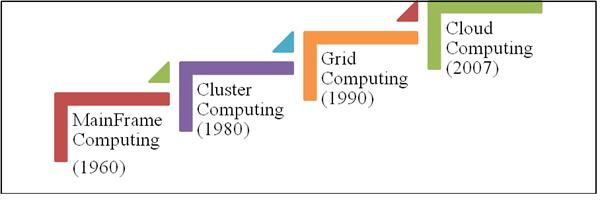
Since 2006, cloud computing is developing at a faster pace below table delineates the developments in the technology.
|
Table : Developments in Cloud Computing |
|
|
Year |
Description |
|
2007 |
Virtual Private Network (VPN) introduced with Good QoS at lower cost. Introduction of Cloud Symbol. |
|
2008 |
Introduced Eucalyptus and Open Nebula which can deploy a private cloud by Helion organization (HP). In the Mid of this year, Gartner realized that companies shifted their assets to per-use service based models. Microsoft Azure was also launched by Microsoft. |
|
2010 |
Introduced Rackspace, an open source cloud software. Launched OpenStack which helps to offer internet based services. |
|
2011 |
IBM announced IBM SmartCloud Framework that supports Smarter Planet. |
|
2012 |
Oracle announced Oracle Cloud that is still in the development stage. This cloud offers each kind of service like Applications (SaaS), Platforms (PaaS), and Infrastructures (IaaS). |
|
2013 onwards |
Many Organizations and users joined cloud (around 800 subscribers) |
In below figure you can see the development in terms of data centers:
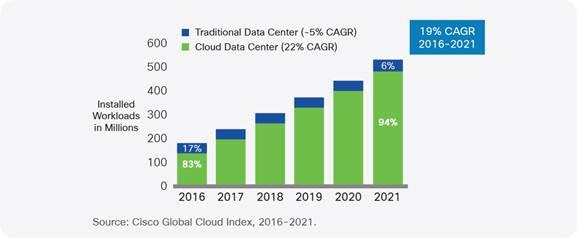
Next section of this article presents the foundation technologies of cloud computing:
Cloud computing has emerged as the seeds sown during distributed computing, utility computing, cluster computing and grid computing
A brief overview of founding technologies is being described as follows:
Distributed Computing
Distributed computing allows processing to be done by different programs on two or more computers that are connected with each other over a network (see figure). It is a type of segment computing.
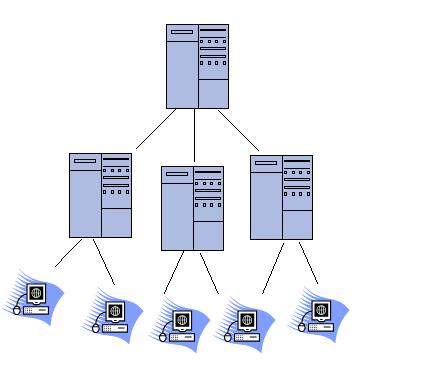
- Peer- to- Peer
It is the contrast of client server model. As shown in figure, it is the distributed architecture having no central coordination. This computing has different kind of models namely, Multiple Peer Relationship, Distributed Peer Relationship and Collaborative Peer Relationship.
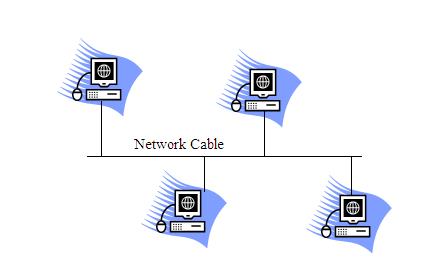
- Utility Computing
Utility computing is used for metered service like electricity. It belongs to the conventional internet hosting services that has the capability to provide rental services on server. Figure depicts the architecture of utility computing.
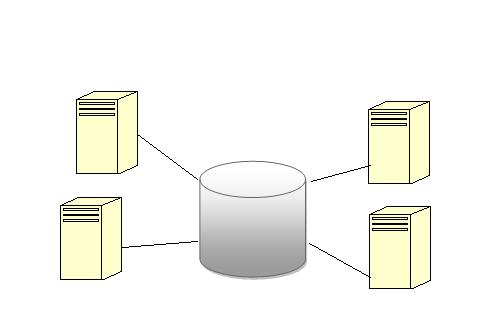
- Grid Computing
It is the part of distributed and parallel computing in which a super virtual computer (comprising of cluster of computers) and a loosely coupled computer performs a big task. Here, every node is autonomous with its own resource manager. Grid Computing is defined as collection of computer resources situated at different geographical locations or multiple independent computing clusters which act as a grid. Figure represents a Foster’s view of grid computing. A grid thus formed is used for providing different kind of services such as computational services, data services and information services. In contrast to computational services which provide secure services in distributed environment, data services has the capability of secure data access. Further, all information regarding computational grid and data services are accessed by information services.
- Cluster Computing
It consists of tightly coupled computers that work together to reach a single goal. The components of cluster are connected with each other through a fast local area network (LAN). Components of cluster computing are being shown in figure.
- Cloud Computing
As is evident cloud computing has emerged as fifth-generation computing and is primarily based on service provisioning through virtualization.




